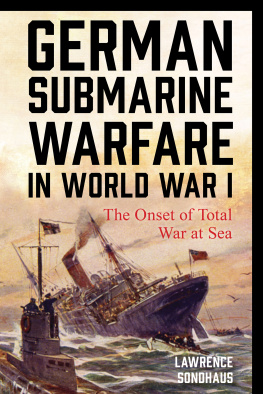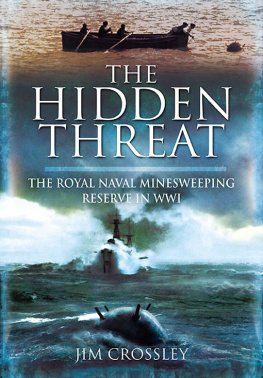
To the memory of all who fought and died in the Great War, and to all of those affected by it, in commemoration of a centurys passing. You are not forgotten.
Tad Fitch would like to thank: my co-author Mike for his hard work and for making the experience of working on this book a very positive and smooth one. Also, my wife Jackie for her patience, never-ending support, and editorial assistance as I spent many hours in virtual isolation while working on this book. Thank you to my father Jerry and brother Jason for sharing their interest and passion for history with me, and to my cat Gracie for her constant companionship and strong moral support as I was working on this project. I also appreciate the support and enthusiasm that my family, friends and co-workers have shown for my work over the years. It means the world to me.
Mike Poirier would like to thank: first, my co-author Tad for taking on an idea and turning it into a reality with his vision, amazing organisation and research skills, and determination. Shelley Dziedzic for introducing me to the world of ocean liners, and Jim Kalafus for teaching me how to research history. Finally, thank you to my family and friends for their support Cheryl Grayko, Brittany Bailey, Dylan Germano, Ken Tasho, Austen Bourassa, Mike Tullie, Bob Gordon & family, Eric Robichaud, Nick Maione, Mary Thompson, Frank Gaschen, Trish Verria-Mignella, Bob Bracken, Mike Findlay, Jack Eaton, Lori Grenier, Leighton H. Coleman III, Shawn Simmons, Doug Reed, Dan Hatton, Cliff Barry, Ann Jarosz, Paul Kloiber, Hal Corley, Karen Lewis, Paul Latimer, Brian Cordeiro, Eric Cimochowski, Jean Timmermeister, Bruce Drapeau, Phil Lebeouf, Joe Vuolo, John Wesley Shipp, Phil Hind, Anthony Cunningham and the Woodcock family. Also, the Johnson, Poirier, Bourassa, Wardyga, Bucka, Grayko, Simons, Sanquedolce & Nobrega families and my beloved Tina Bradbury.
Both authors thank the following individuals for their help and assistance, which proved invaluable to this volume: special thanks are owed to Steve Hall, without whose help and support this book may never have been published; Hugh Brewster for his assistance and for writing the wonderful foreword we very much appreciate it; J. Kent Layton and Mark Chirnside for taking time out of their busy schedules to review our manuscript and share their frank thoughts and observations regarding it; Amy Rigg and the entire team at The History Press for your assistance and support, and for being willing to publish our work; Trevor Powell for generously allowing the authors to use items from his personal collection in this work; Demetrio Dimi Baffa Trasci Amalfitani di Crucoli and his family for allowing us to publish the letters written by Angela Countess Bakeev, and Jill Capaldi for translating them from Italian; Neil Fotheringham for the use of Jacob Fotheringhams private account; the Lincolnshire Archives for allowing us to quote Harold Beecheys account; and Eddy Lambrecht for generously allowing us to use rare photographs from his outstanding private collection.
Many others supplied us with accounts or photographs for use, or support in general, and their help is greatly appreciated. These include (in alphabetical order): Mark Astbury, George Behe, Gavin Bell, William Brower, The Columbia Basin Institute of Regional History, Ioannis Georgiou, Martin and Jan Gombert, Charles Haas, Sam Halpern, Brian Hawley, Peter Kelly, Mandy Lenanton, Don Lynch, Kit Abbott Mead, Jenya Nesmeyanov, Phyllis Ryerse, Eric Sauder, Pierette Simpson, Tarn Stephanos, Craig Stringer, Kalman Tanito, Rich Turnwald, Geoff Whitfield, Russ Willoughby, Bill Wormstedt and Cary Young. Thank you to Gudmundur Helgason and the team at uboat.net for maintaining such a wonderful website and invaluable tool for researchers. Also, thank you to the Titanic Historical and Titanic International Societies.
If you contributed to this volume, and somehow your name slipped through the cracks and does not appear in the acknowledgements, we apologise. If you inform us of the omission, we will make sure that this is corrected in future editions.
Finally, despite all of the hours that we spent researching, writing and proofreading this manuscript, it is possible that some mistakes have managed to slip through. These mistakes are ours alone, and should not be attributed to anyone else.
Contents
By Hugh Brewster
The state of war begins, in fact, at the pier, wrote American passenger Will Irwin of his crossing on the Lusitania in early February 1915. Irwins eyewitness account, just one of many included in this comprehensive history of the great liners during the Great War, seems tinged with navety in hindsight. The war had been under way for just over six months but daily life in the United States had not been much affected by it. For Irwin, the wartime precautions taken by the Cunard liner add a frisson of danger to an otherwise routine voyage. He describes the British naval cruisers that pass as monotonously waiting for something to happen. Winter gales make it a rough crossing but Irwin believes the liner rolls so heavily because of certain mysterious and very heavy contraptions of steel she was not meant to carry. And he suspects that some of the mysterious passengers on board are engaged in pretty little spy games. When they reach the Irish Channel, he records that tomorrow morning, escorted by a guide cruiser, we shall zig-zag through the mine fields into port. Then, the least imaginative among us will realize that we are entering a world at war.
Even the most imaginative of Irwins fellow travellers, however, would likely not have envisaged a German U-boat dispatching the famous luxury liner to the bottom in eighteen minutes. Yet this would be the Lusitania s fate only three months later. The shocking loss of 1,198 lives during the 7 May 1915 sinking caused outrage in Britain and America. With it came the realisation that the same industrial progress that allowed the creation of modern marvels like Lusitania and her sister Mauretania , ships that could convey passengers across the Atlantic in elegant comfort in just seven days, had also led to the horrors of modern industrial war. Two weeks before the Lusitania was torpedoed, poison gas had been released on the Western Front outside Ypres. Clearly, this was a war unlike any the world had seen before.
After the loss of the Lusitania , one might think there would be very few civilian passengers willing to venture aboard ships in wartime. Yet the first-person accounts so carefully selected by authors Poirier and Fitch relate stories of escape from a remarkably long roster of torpedoed ships the Arabic , the Hesperian , the Persia , the Sussex and many others. The loss of the Titanic s sister ship, the Britannic , sunk by a mine while serving as a hospital ship in 1916, is detailed here, as is the torpedoing of the Carpathia , the liner that rescued the Titanic s survivors. (Ironically, the Californian , the ship that stood by while the Titanic went down, also met with the same end.) In all, the authors inform us, there were over 5,000 ships sunk by U-boats during the four years of war and 15,000 people died as a result. Over one-third of all the men who served on the U-boats, nearly 5,000 in total, also perished. Yet, as the authors point out, the world had seen the potential of submarine warfare and German U-boats would be put to even more deadly effect during the Second World War.
An impressive array of photographs are displayed here, complementing the text and illuminating this outstanding chronicle of one of the lesser-known chapters in Great War history. For liner enthusiasts, naval history buffs and anyone interested in the First World War, here is an invaluable addition to their reference shelf.
Next page









